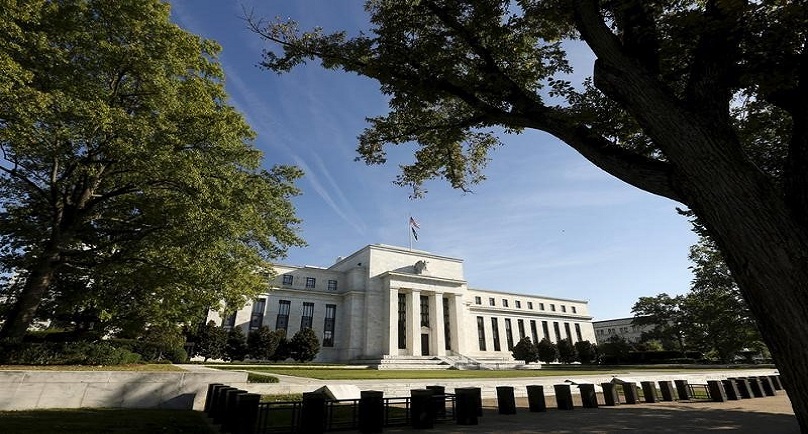Image: The Federal Reserve headquarters in Washington September 16 2015. REUTERS/Kevin Lamarque
By Jonathan Spicer
NEW YORK (Reuters) – The Federal Reserve, facing the delicate task of explaining how it will forge ahead with rate hikes in a stormy world economy, is wary of again tying its actions to calendar dates but officials want to keep “forward guidance” as an emergency tool.
San Francisco Fed President John Williams said on Friday such time-based guidance can be “like a sledgehammer … a powerful tool when it’s needed,” while Fed Vice Chairman Stanley Fischer said it is as close as the U.S. central bank can get to a cohesive forecast.
The debate over how the world’s most powerful central bank should best communicate policy was prompted by a research paper that warned the Fed against slipping back into the trap of an over-reliance on time frames in explaining when it planned to adjust interest rates.
Economists presented the paper to a roomful of top Fed officials in New York. They argued that, now that rates are up a notch, the Fed should stress that further moves are based on very hard-to-predict economic data, and policymakers should be more unassuming in speeches and published forecasts.
With the U.S. central bank headed into a key March 15-16 meeting in which one option is to pause policy for an extended period, the conclusion that it would be “imprudent” to offer specific time lines may yet hold some sway.
“Time-based forward guidance should only be used in extremely unusual circumstances,” five Wall Street and university economists concluded in the high-profile paper. “We believe that the current situation does not justify (it).”
A frustratingly slow economic rebound delayed the Fed’s ability to get off zero rates until December, while a projected path of four rate hikes this year is viewed as unrealistic by financial markets.
Beginning in late-2008 the Fed made conditional promises about when rates might rise, including specific time frames. In one of the biggest blunders, then Chairman Ben Bernanke’s 2013 suggestion that a bond-buying program could be trimmed “in the next few meetings” of the Fed set off market turmoil that delayed the move.
Current Fed Chair Janet Yellen has mostly retreated from this so-called “forward guidance,” though even she had to ditch telegraphed rate hikes in June and again in September last year before finally moving in December.
In October, when leading Fed governors openly opposed each other’s views, the effectiveness of Fed communications fell to a two-year low, according to a New York Fed poll of primary dealers.
CHART TROUBLES
“Data dependency” is the Fed’s new communications mantra.
Yet remnants of time-based forward guidance are still found in Fed statements, speeches and, most explicitly, in charts published every three months showing individual policymakers’ expected path of rate hikes, the so-called “dot plot”.
“What’s worrying me is that … it looks like a commitment, it looks like a freight train,” St. Louis Fed President James Bullard said on Wednesday.
Fed Governor Jerome Powell on Friday defended the use of dates and said they may be hard to avoid given he and colleagues expect rates to “only gradually” return to pre-crisis levels.
“Try saying that without referring to time,” Powell said.
The charts published in December suggested the Fed would hike rates four times in 2016.
But since then, a global market selloff and fears of recession have forced Yellen and some other Fed officials to downplay those expectations. Traders have grown deeply skeptical of any more tightening this year and some have even predicted a policy reversal.
The critical paper warned that returning to calendar-based forward guidance only “mutes the effect of macroeconomic news on interest rates and unnecessarily places restrictions on future Fed action”.
The authors were JPMorgan’s Michael Feroli, Morgan Stanley’s David Greenlaw, Deutsche Bank’s Peter Hooper, former Fed governor Frederic Mishkin of Columbia University and Amir Sufi of the University of Chicago Booth School of Business.
It criticized “tunnel vision” of a press focused on time-based comments from the Fed, found that market volatility drops during these periods, and recommended changes to the dots charts to show the level of confidence in forecasts.
The Fed itself considered such changes at last month’s policy meeting, but decisions were put off.
(Reporting by Jonathan Spicer; Additional reporting by Ann Saphir in San Francisco; Editing by David Chance and Chizu Nomiyama)
Copyright 2015 Thomson Reuters. Click for Restrictions.


